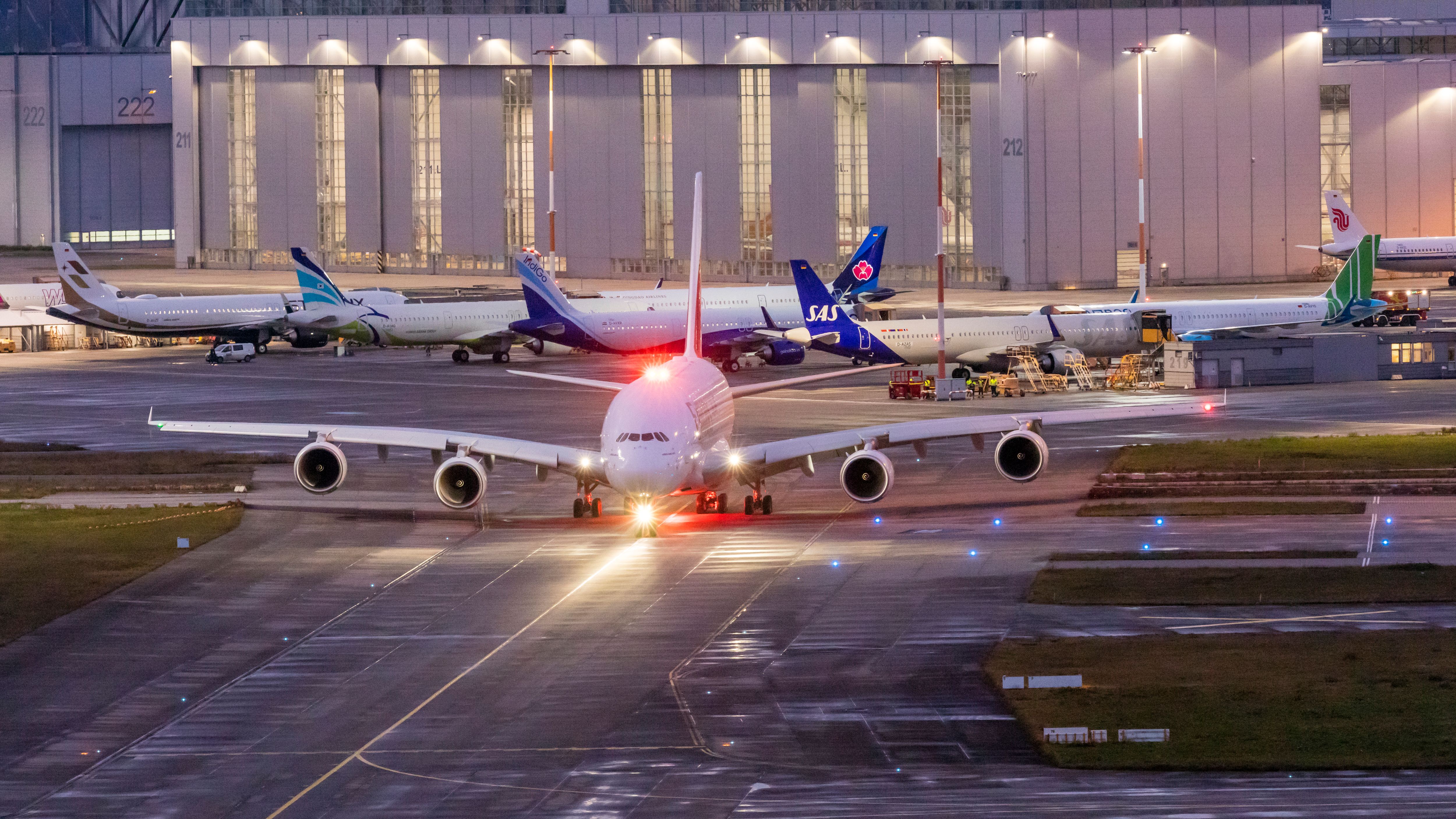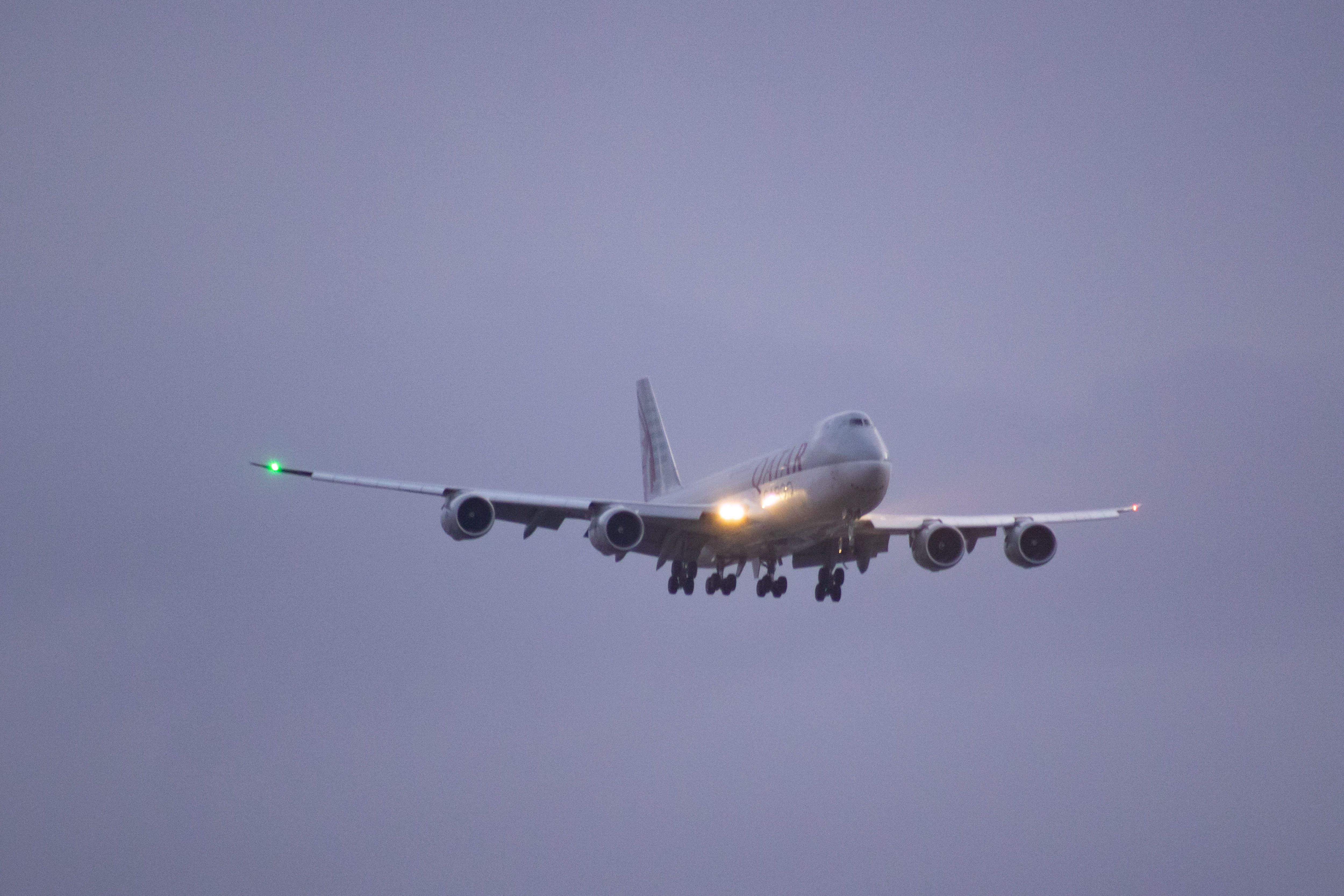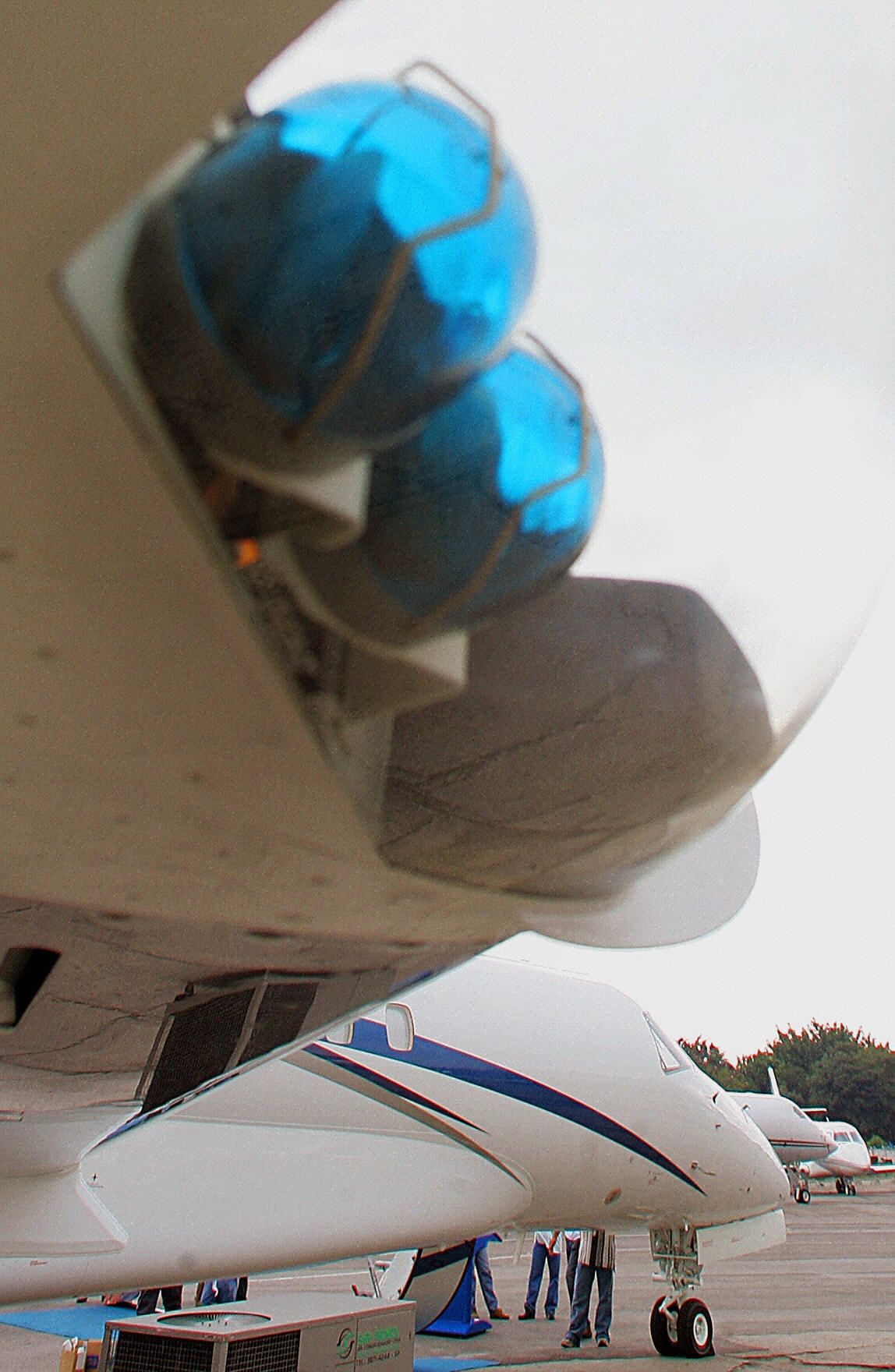All aircraft are fitted with a number of external lights, from bright landing lights to flashing wingtip lights. These do, of course, all serve a purpose for navigation or safety. This article takes a look at what the main external lights on modern jet aircraft are for.
To aid pilot visibility
Lights are there for two main purposes – to assist with pilot visibility of the runway and airport (much like a car headlight) and to help see other aircraft, both on the ground and in the air. The only exception to this is possibly the lights on the aircraft tail used to illuminate the airline logo.
The main lights for aiding visibility are:
Taxi Lights. These are bright lights located on the landing gear, wing or aircraft nose. They are used on the ground to illuminate the taxiways and aid ground navigation. Many aircraft also have lights to the side to illuminate the taxiway or obstacles to the side of the aircraft.
Landing lights. These are high-intensity lights used to illuminate the runway for take-off and landing. They are located usually on either the landing gear strut or under the wings or aircraft fuselage. Their usage depends on airline and local policies, but usually they are illuminated on takeoff after entering the active runway, and on landing on approach when below 10,000 feet.
As well as illuminating the ground, they also aid in the visibility of the aircraft, which is why they are often left on for some time after takeoff.
Making the aircraft more visible
The second function of external lights is to make aircraft more visible to other aircraft. Technology, of course, plays a major role today in aircraft navigation and safety, but the basic principles of keeping them visible still remain.
Get the latest aviation news straight to your inbox: Sign up for our newsletters today.
Navigation / position lights. These are red and green lights located on the wingtips. These are steady lights, and are always on, on the ground and in the air. The red light is always on the left wing, and the green light on the right. These enable anyone on the ground, or another aircraft in flight, to determine the position and direction of the aircraft. Most aircraft also add a white navigation light on the rear tail.
Their use stems from the 19th Century when red and green lights started to be used on shipping for the same identification purposes. These became a legal requirement for shipping in the US in 1838 and in the UK in 1846. Their use has since extended internationally, and to aircraft and even spacecraft.
Strobe lights. All modern aircraft also have white flashing strobe lights on the rear wingtips. These are the flashing white lights you see if you look at aircraft in the night sky.
These are for collision avoidance, simply to make the aircraft more visible. They are usually activated for the whole flight, but often not until reaching the active runway.
Beacon lights. These are large, usually red-colored, lights on the top and bottom of the fuselage. Like the strobe lights, these are part of the collision avoidance measures. These lights will be activated on startup and left on for the duration of the flight. They also act as a signal to ground staff that the engines are active.
What do you think about the various lights fitted on an aircraft? Please share your thoughts in the comment section.


.jpg)
.jpg)

